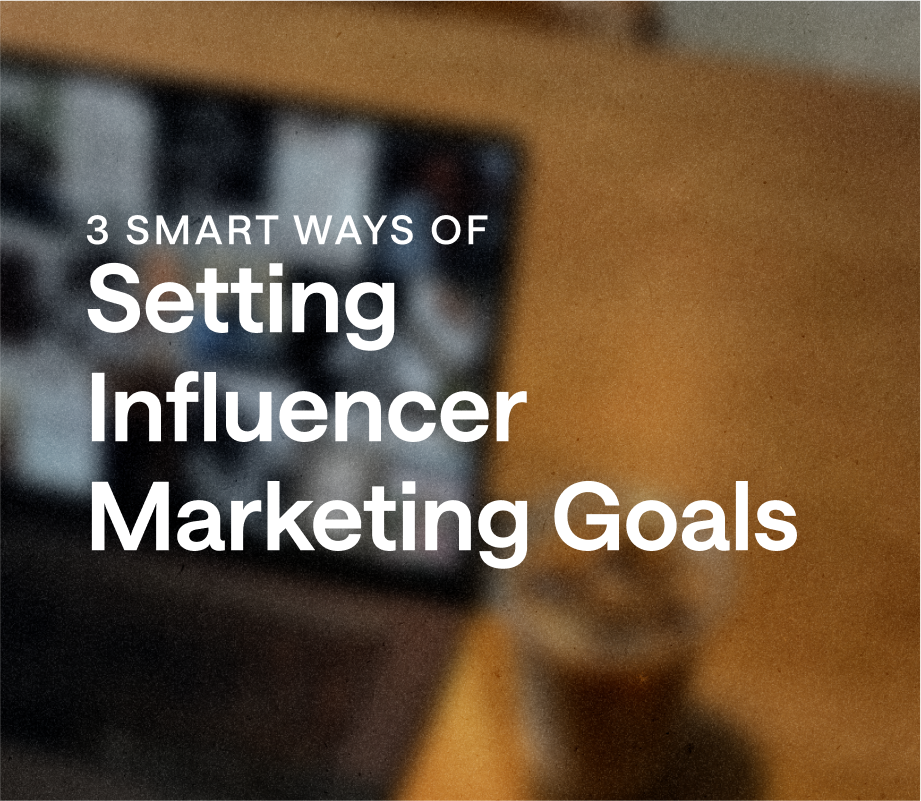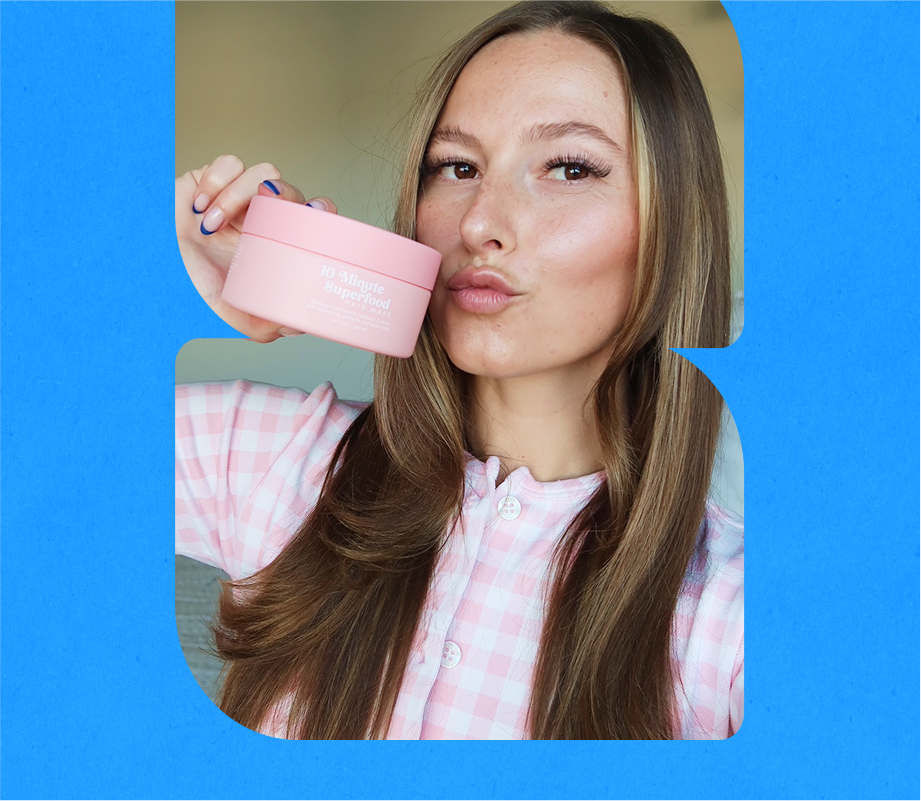When teaming up with influencers on social media, brands can fail to deliver a clear return on investment (ROI) if they don’t define their goals first. To run a successful campaign, you need to know where the finish line is. This guide to setting goals for influencer marketing campaigns will help you set strategic, measurable, and achievable influencer marketing goals.
Want to turn your goals into ROI? Start with clear objectives—then see how Later Influence can help you reach them. Book a demo to get started.
Table of Contents
- Why setting influencer marketing goals is non-negotiable in 2025
- Types of influencer marketing goals
- Benefits of setting goals
- How to set SMART influencer marketing goals
- Aligning goals with creator types & platforms
- Measuring success: Tools & attribution tips
- Real-world examples & case studies
- Common mistakes when setting goals & how to avoid them
Join over 1 million marketers to get social news, trends, and tips right to your inbox!
Email AddressWhy setting influencer marketing goals is non-negotiable in 2025
Influencer marketing continues to grow—Statista projects the industry will reach $33 billion in 2025. That means more brands are investing and getting strategic about how they partner with creators. And companies are taking a strategic approach to influencer marketing.
Not setting the right goals can lead to misaligned messaging and missed opportunities—especially when your campaign reaches a wide audience. Without clear goals, brands risk investing in content that misses the mark—or worse, sends the wrong message to their audience.
Take the skincare company Biore, for example. In an effort to connect with their audience, they partnered with influencer Cecilee Max-Brown to support Mental Health Awareness Month. In a TikTok video, Max-Brown applied the skincare products while discussing the difficulties she faced over the year, including surviving a school shooting.
Biore’s goal of being authentic and relatable missed the mark because users thought the brand was capitalizing on trauma. Biore admitted to the mistake, citing a lack of sensitivity on the issue. With more focused goals, both Biore and Max-Brown could’ve better aligned their messaging with brand values and avoided this PR disaster.
Types of influencer marketing goals
For the best results, you’ll need to find the right key performance indicators (KPIs) for influencer marketing campaigns. Knowing how each metric works will help you measure the success of each influencer and platform to reach your goals faster.
Tier 1: Awareness goals
Influencer campaigns with awareness goals target people who don’t know about a company's brand or product. They focus on bringing new prospects into the sales funnel.
Here are some key metrics for tracking your progress toward your awareness goals:
Impressions tell you how many times users have seen your content, including multiple times by the same user.
Reach measures how many unique users have seen your content.
Engagement rate is the percentage of users interacting with your content.
Brand mentions are when people on social media tag your brand in posts, comments, or hashtags.
Awareness campaigns are powerful tools for companies that want to get the word out about new products, promotions, or prices. An example of an awareness goal might be boosting your reach by over 1 million with a 5% engagement rate through Instagram influencers.
Pro tip: It might seem like a no-brainer to partner with well-known influencers to spread awareness, but nano and micro creators can work wonders at a low cost. Advertising with multiple smaller, niche influencers can feel more authentic and reach several audiences for the cost of one macro influencer.
Tier 2: Consideration goals
When your target audience already knows about your brand or product, they may be researching your ratings and reviews to learn about people’s experiences with you. To capitalize on this, set your goals around kindling curiosity and action. Here are key metrics to track progress toward your consideration goals:
Clicks: Clicks happen when a prospect is interested enough to open a link to a bio, story, post, or landing page.
Saves: If your content is engaging, users may save it to revisit it later.
Profile visits: When someone stops scrolling to check out your profile, it shows a serious interest in your brand.
Email signups: People who sign up for your email newsletter are genuinely interested in what you’re pushing.
An example of a consideration goal might be reaching 1,000 landing page visits through influencer accounts using tracked links.
Try this: Add UTM tags and trackable links to see where your traffic is coming from. Later’s link in bio tool helps manage multiple links in one place—and track clicks with ease.
Tier 3: Conversion & revenue goals
With an engaged audience, you can make moves to convert interest into revenue. In this tier, use these metrics to track progress:
Sales: Track how many purchases were made through your influencer campaigns to understand which creators and content types drive conversions.
Discount code redemptions: Track conversions from specific creators with unique codes that offer discounts.
CPA: Cost per action (CPA) is a metric for finding how much you spend per specific action, like a click, signup, or sale. You can find it by dividing the total campaign cost by the number of conversions.
ROAS: Return on ad spend (ROAS) tells you how much you’ve earned per dollar spent on influencer marketing. Find this number by dividing the revenue generated by how much you’ve paid the influencer.
If you’re pushing limited-time offers, holiday discounts, or product launches, promoting these events through influencers can result in a big sales boost. A goal for your campaign might be generating $5,000 in tracked revenue and achieving five times ROAS per influencer.
Use case: Affiliate and ambassador programs are particularly effective marketing strategies for driving sales and boosting ROI. Influencers and creators use affiliate links and codes to promote products and services through their channels. In return, they receive small commissions for each sale. Ambassadors advocate for a brand over the long term, often posting regular content and promotions. Use a combination of these programs to maximize your conversions.
Tracking the right KPIs is key to real results. Whether you’re building awareness or boosting sales, Later Influence helps you measure what matters—and optimize every collab. Book a demo to see it in action.
Benefits of setting goals
Rather than pumping out content and seeing what happens, goal setting results in specific benefits, including:
More User-Generated Content (UGC): With well-thought-out goals, you can work with influencers to encourage the audience to contribute content, like online reviews and testimonials.
Increased brand awareness: Setting awareness goals lets you connect with your target audience and clue them into your brand identity and values.
More leads and sales: Setting the goal of generating leads and sales can help you focus your efforts. Having influencers promote discount codes, limited-time deals, and affiliate links will amount to more interest and, ultimately, revenue.
Increased customer retention and community engagement: Prioritizing community building and customer retention leads to repeat business and a loyal fan base.
How to set SMART influencer marketing goals
A surefire way to get results is to set SMART goals. This acronym breaks down into:
Specific: Spell out exactly what you want to achieve. For example, increase brand awareness on TikTok with three to five mid influencers.
Measurable: Use metrics to analyze results. For example, get at least 1 million impressions with a 5% engagement rate on each post.
Achievable: Apply realistic goals with your available resources. For example, partner with five relevant micro influencers for under $1,000 each.
Relevant: Create goals that align with your overall objectives. For example, get prospects to a product landing page via CTAs on blogs.
Time-bound: Set a deadline. For example, generate 100 leads within the next 30 days.
Let's say you want to spread awareness of your shoe brand. Your SMART goal may sound something like this. With a budget of $4,000, partner with three fitness micro influencers on Instagram to reach an audience of 1.5 million with 5% engagement on campaign posts within the next month.
Looking at industry benchmarks or past campaign data helps ensure your SMART goals are grounded in real performance—not guesswork. At Later, we find benchmarks appropriate for your brand or product by leveraging our data, insights, and tools.
Want to make every goal a SMART one? We’ll help you set strategic targets—and hit them. Book a Later Influence demo to see how we turn data into results.
Aligning goals with creator types & platforms
There isn’t a one-size-fits-all when choosing influencers to work with. To target the best influencers for your goals, you must understand the different types of influencers and platforms.
Nano influencers: These influencers have small audiences ranging from 1K to 5K followers. Team up with nano influencers if you have a limited influencer marketing budget and want to market to an engaged community in a specific niche.
Micro influencers: Micro influencer marketing means partnering with creators who have 5k to 25k followers. They provide a cost-effective opportunity to reach new audiences. Platforms like Later Influence help connect your brand to micro influencers who deliver the best ROI on your campaigns.
Mid influencers: This tier of creators has between 25K and 100K followers. They can give your brand serious exposure, often across multiple platforms.
Macro influencers: Macro influencers have anywhere from 100K to half a million followers. These influencers command a big budget, but you’ll get access to large audiences and conversion opportunities.
Mega Influencers: Mega influencers or celebrities have anywhere from 500K to millions of fans. They offer you maximum visibility at a high price.
Similarly, each platform has different advantages to help you attain your goals.
TikTok: Great for creating viral influencer marketing content and spreading awareness
Instagram: Stories and posts can help move brand-aware prospects closer to a conversion
YouTube: Longer videos allow creators to build trust and drive conversions
Blogs/Newsletters: Blogs and newsletters create leads from prospects already interested in similar brands and products
Once you’ve determined your goals, you can mix and match creator types and platforms to maximize your ROI.
The right creators—and influencer marketing platforms—make all the difference. Later Influence connects you with the best-fit influencers to meet your goals and maximize ROI. Book a demo to find your perfect match.
Measuring success: Tools & attribution tips
Before firing up your new influencer campaign, compose a solid strategy. Real-time influencer analytics tools like Later and Google Analytics can help track campaign data and get feedback to make data-driven changes when necessary. You should also take advantage of the insights provided by the social platforms, like TikTok Analytics and YouTube Studio.
Plan your campaigns to align with the customer journey and move them through the sales funnel. Calculate marketing ROI and earned media value gained in each tier with influencer marketing tools like Later Influence.
A/B testing different creators, platforms, or content types helps you pinpoint what resonates best—and fine-tune your strategy in real time. Try out various messages for your audience and continue to hone your approach to fit your goals.
Real-world examples & case studies
Clear goal setting for influencer marketing equates to real-world success. For example, Later helped pair Lindt and American Greetings with the shared objective of raising awareness of their Mother’s Day products. Using mom micro-influencers on Instagram, Later helped them create 109 pieces of content, resulting in 107.7k impressions and an average engagement rate of 26.8%
Common mistakes when setting goals & how to avoid them
Knowing what can go wrong helps you avoid common mistakes when setting influencer marketing campaign goals.
Vanity metrics, like high follower or view counts, are attractive but not very helpful metrics that can distract you from success. Set tangible goals, like the number of conversions and leads, or engagement levels, that lead to desired results.
Vet the best creators for your tasks. Choosing popular influencers on platforms that don’t align with your campaign will waste time, effort, and resources.
If you can’t track and analyze the data coming in effectively, you can’t make sound decisions. Use tracking tools and analytics platforms like Later to accurately monitor your campaign.
Match the right goal to the right strategy
Setting goals for influencer marketing will allow your brand to align with the right creators and platforms. Whether you’re looking for more exposure, engagement, or sales, you can get results by taking the right approach.
Later’s influencer marketing services help brands run influencer campaigns that reach their full potential. Book a demo with Later to plan your next influencer campaign.



